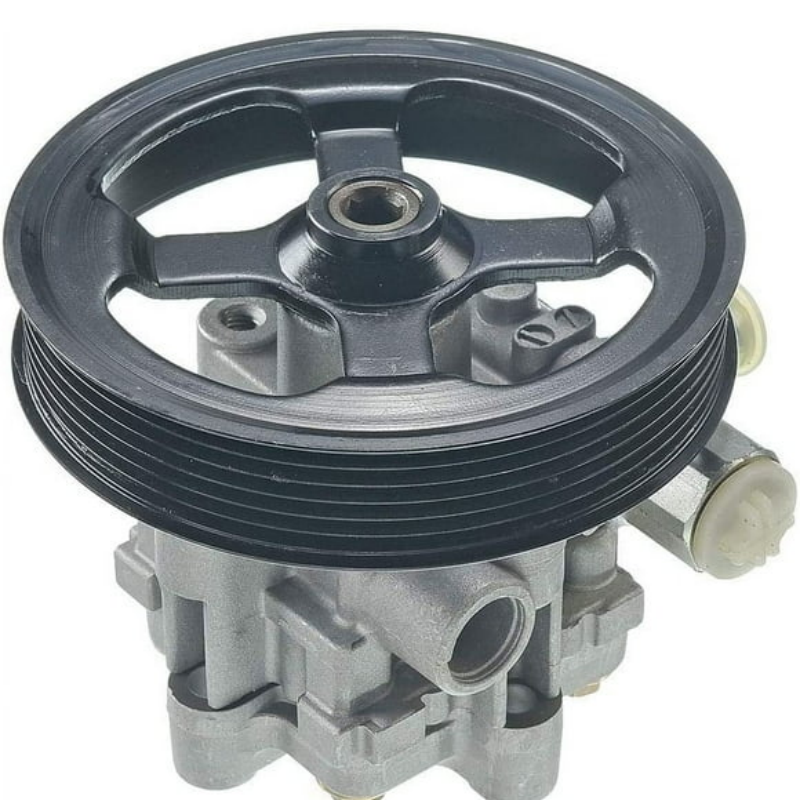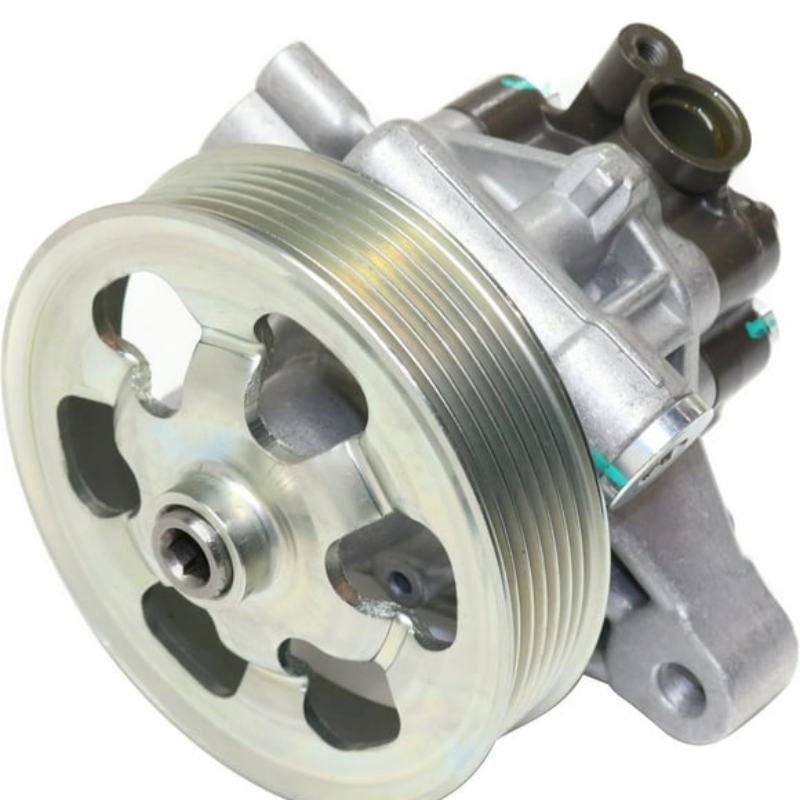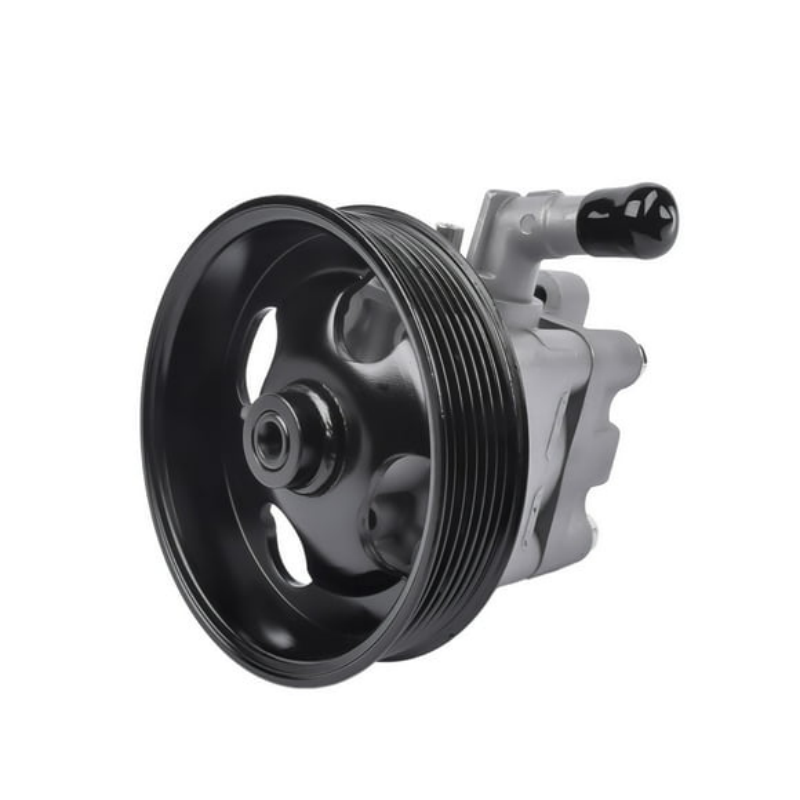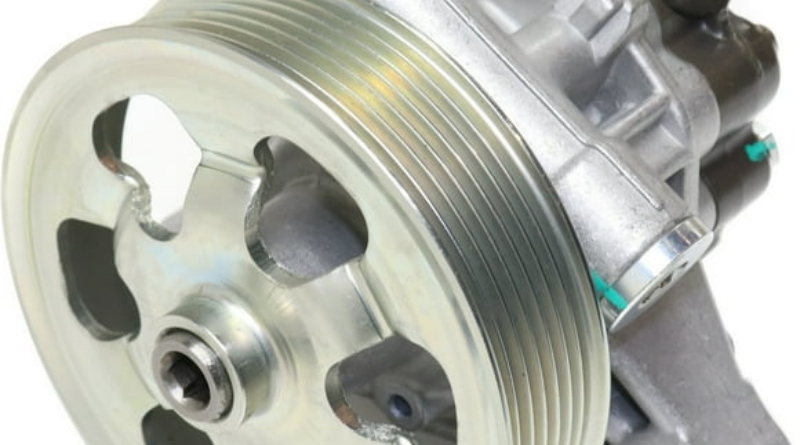Understanding What Causes Power Steering Fluid to Leak
The power steering system in your vehicle plays a vital role in ensuring easier maneuverability and control, especially at low speeds. The power steering fluid operates under pressure, aiding in transmitting the force necessary to assist steering. However, a common issue faced by many drivers is a leak in the power steering fluid, which can lead to steering problems and potential safety hazards. Understanding what causes power steering fluid to leak is crucial for any vehicle owner, as it helps in identifying problems early, preventing further damage, and maintaining vehicle performance. This comprehensive guide will delve into the various factors and components that contribute to power steering fluid leaks. We’ll cover everything from common causes and symptoms to preventative measures and repair recommendations, equipping you with the knowledge needed to keep your power steering system in optimal condition.

The Role of Power Steering Fluid
Before exploring what causes power steering fluid to leak, it’s essential to understand the role this fluid plays in your vehicle’s steering system. Power steering fluid is a hydraulic fluid that transmits power to the steering mechanism, making it easier to turn the steering wheel.
How Power Steering Fluid Works
When you turn the steering wheel, the fluid circulates through the power steering pump and into the steering gear or rack. This fluid pressure assists in controlling the angle and movement of the vehicle’s wheels. Without sufficient fluid, the power steering system cannot function effectively, leading to poor steering response and increased effort when turning the wheel.
Types of Power Steering Fluids
Different vehicles utilize various types of power steering fluids, including:
- ATF (Automatic Transmission Fluid): Often used in older models or certain transmissions, this fluid serves dual purposes.
- Specific Power Steering Fluids: Many manufacturers have their specific formulations designed for specific vehicle models. These fluids are often color-coded to easily distinguish types.
Regardless of the type, maintaining the correct level of power steering fluid is vital for the effective functioning of the power steering system.
Common Causes of Power Steering Fluid Leaks
Several factors can lead to power steering fluid leaks. Understanding these causes will help you identify issues promptly, allowing for effective solutions. Here are some of the primary culprits behind power steering fluid leaks:
Damaged or Worn Seals
The seals within the power steering system play a crucial role in preventing leaks. Over time, exposure to various elements (like heat and pressure) can cause seals to deteriorate or become damaged.
- How they Fail: Cracks or wear in the rubber seals can result in fluid escaping under pressure.
- Symptoms: If you notice fluid pooling under the vehicle or the steering feels less responsive, the seals may be compromised.
Leaking Hoses and Lines
Power steering systems rely on a series of hoses and lines to transport fluid throughout the system. These components can develop leaks over time due to wear and tear.
- High-Pressure Hoses: These hoses transport fluid from the pump to the steering gear and are often the most susceptible to leaks.
- Low-Pressure Hoses: These hoses return fluid to the reservoir. While they experience less pressure, they can still leak due to damage or corrosion.
Damaged Power Steering Pump
The power steering pump is responsible for generating the hydraulic pressure required for the system to function. If the pump develops a leak, it can lead to a significant loss of fluid.
- Signs of Damage: Whining noises during operation or fluid leaking near the pump can indicate a malfunctioning unit.
- Seeking Replacement: If the pump is damaged, replacing it promptly is essential to avoid further issues.
Corroded or Rusted Components
Corrosion or rust on components of the power steering system can lead to deterioration and leaks.
- Common Areas: Connections, fittings, and even the power steering pump can become corroded, especially in older vehicles.
- Preventive Measures: Regular inspections can help catch these issues before they result in leaks.
Improper Installation of Components
In situations where the power steering system has been serviced or replaced, improper installation can lead to leaks.
- Connection Issues: Loose connections or improperly fitted hoses can result in leakage.
- Check Installation: If you have recently had work done, ensure that all components are correctly installed.
High Temperatures
Excessive heat can cause seals and hoses to break down faster than usual, contributing to leaks in the system.
- Effects of Heat: Increased engine heat can lead to the expansion of fluids, stressing hoses and seals.
- Monitoring Heat Levels: Keeping an eye on engine temperature and addressing overheating issues can minimize risks.
Symptoms of Power Steering Fluid Leaks
Recognizing the symptoms of power steering fluid leaks can prevent more significant problems and ensure your vehicle remains safe to drive. Here are some key signs to watch for:
Low Power Steering Fluid Levels
One of the most evident signs of a power steering fluid leak is visibly low fluid levels in the reservoir.
- Fluids Levels: Regularly check the fluid reservoir, ensuring it’s within the recommended range.
- Top-up Caution: Topping off the fluid temporarily may mask the problem but does not resolve the leak itself.

Whining Noises
If you hear whining or whining sounds when turning the steering wheel, this could indicate low fluid levels due to a potential leak.
- Causes of Noise: Air entering the power steering system due to low fluid levels creates noise when trying to assist with steering.
- Action Steps: Address fluid levels immediately if you hear these sounds.
Difficulty Steering
A noticeable change in steering responsiveness may indicate a leak.
- Feeling Stiffness: If turning the steering wheel requires more effort than usual, it could be a sign that the power steering fluid is low.
- Assessing Driveability: Difficulty steering can compromise safety; if encountered, have the vehicle inspected.
Fluid Puddles or Spots
Visible fluid leaks under the vehicle are a clear indicator of a power steering fluid leak.
- Identifying Fluid: Power steering fluid typically has a distinct reddish or amber color, depending on the type and condition.
- Location Check: Look under the car, especially near the power steering pump and hoses, for any signs of leakage.
Warning Light
Some vehicles feature a warning light that activates when the power steering system is not functioning correctly.
- Check Your Dashboard: If this warning light illuminates, it’s essential to investigate promptly, as it may indicate low fluid levels or system failure.
Inspection and Diagnosis of Power Steering Fluid Leaks
If you suspect a power steering fluid leak, inspecting the system promptly is crucial. Here’s a comprehensive approach for diagnosing potential issues:
Visual Inspection
Begin with a thorough visual inspection of the power steering system.
- Check Hoses and Lines: Look for signs of wear, fraying, or kinks in hoses that may indicate leaks.
- Examine Seals and Fittings: Inspect all connections and seals for degradation or damage.
Fluid Check
- Open the Hood: Safely open the hood and locate the power steering fluid reservoir.
- Check Fluid Levels: Assess the fluid level and see if it is below the minimum mark.
Pressure Test
Mechanical techniques may be necessary for diagnosing leaks effectively.
- Using Tools: A pressure tester can assess for leaks under fluid pressure, helping identify troublesome areas.
- Seeking Assistance: If you’re unfamiliar with this procedure, consider seeking help from a qualified mechanic.
Steering Performance Analysis
Assess how the steering feels while driving.
- Turn the Wheel: Pay attention to any noises or unusual sensations while turning.
- Drive Experience: Look for difficulty or stiffness while maneuvering; these signs may indicate a problem.
Using Diagnostic Equipment
In more sophisticated scenarios, utilizing diagnostic equipment can provide further insights.
- OBD-II Scanner: Scanning for fault codes can reveal issues within the power steering system related to the fluid supply.
- Professional Help: If you’re encountering persistent issues, a certified mechanic can perform a comprehensive analysis.
Repairing Power Steering Fluid Leaks
Once you’ve identified the source of the power steering fluid leak, it’s essential to take the necessary steps for repairs. Here’s a guide on how to approach this process effectively.
Replace Damaged Hoses
If you discover that a hose has deteriorated or developed a leak, replacing it is crucial.
- Choosing a Replacement: Ensure that you use high-quality replacement hoses compatible with your make and model.
- DIY Method: Use proper tools to disconnect and replace the faulty hose, ensuring secure fittings.
Repair or Replace the Power Steering Pump
Should the leak originate from the power steering pump itself, you may need to repair or replace it.
- Assess the Pump: Check if minor fixes can be applied to gaskets and seals. However, if the pump has significant damage, opting for a replacement might be best.
- Professional Assistance: If you’re unfamiliar with pump replacement, enlisting a mechanic is advisable.
Seal Replacement
If seals are compromised, replacing them can prevent further leaks.
- Seal Replacement Kits: These kits can often be found at auto supply stores and typically come with everything you need to replace faulty seals.
- Procedure: Carefully remove the old seal and clean the contact area before installing the new one.
Fluid Top-Up
After repairs, ensure the power steering fluid is topped up to the recommended level.
- Choosing the Right Fluid: Refer to your vehicle’s manual for the correct power steering fluid type.
- Monitoring Levels: Continue to check fluid levels regularly after repairs to ensure no further leaks occur.
System Bleed
After making repairs, the power steering system may need to be bled of air.
- Bleeding Technique: Follow your vehicle manufacturer’s guidelines, which may include turning the steering wheel left and right several times while checking fluid levels.
- Restoration of Functionality: This process helps restore proper functionality after repairs and ensures a smooth steering experience.
Preventative Measures to Avoid Power Steering Fluid Leaks
Taking preventive measures can help you avoid future power steering fluid leaks. Here are some beneficial tips to ensure the longevity of your power steering system:
Regular Inspections
Routine inspections can identify potential leaks before they escalate into significant problems.
- Check for Leaks: Regularly inspect hoses, fittings, and seals for any signs of wear or damage.
- Monitor Fluid Levels: Make it a habit to check fluid levels frequently to catch drops early.
Maintain Proper Fluid Levels
Keeping your power steering fluid at the correct level plays an essential role in preventing leaks.
- Fluid Check: Establish a routine of checking fluid levels at least monthly or before long trips.
- Top-Up When Necessary: Always top up with the appropriate fluid type to avoid damaging the system.
Early Signs Awareness
Being aware of early warning signs can help you address issues promptly.
- Listen for Noises: Stay alert for any whining or groaning sounds, indicating potential problems with the power steering system.
- Steering Performance: Take note of any changes in steering dynamics, such as increased effort or responsiveness.
Professional Maintenance
Consulting with a trusted mechanic for professional maintenance can ensure all systems operate smoothly.
- Comprehensive Checks: Schedule regular service visits for complete vehicle health inspections, emphasizing steering and fluid systems.
- Advising on Repairs: A mechanic can offer insight into repairs needed to prevent future power steering fluid leaks.
Upgrading Components
In some cases, upgrading specific components can enhance durability and reduce the risk of leaks.
- Resilient Materials: Consider replacing hoses and seals with high-quality or reinforced options designed to withstand wear and heat more effectively.

Conclusion
Understanding what causes power steering fluid to leak is essential knowledge for any vehicle owner. By recognizing the common causes, symptoms, and effective repair methods, you can maintain the functionality of your vehicle’s power steering system, ensuring a safe and smooth driving experience.
Regular inspections and prompt attention to any signs of leakage will help you prevent more severe issues down the road. Moreover, implementing preventative measures and engaging in routine maintenance can significantly extend the life of your power steering system.
Ultimately, maintaining your power steering fluid and associated components is an investment in your vehicle’s performance and safety. By arming yourself with information and taking proactive steps, you contribute to a better driving experience for yourself and everyone on the road. Remember, when it comes to leaks of any kind, early detection and intervention are vital.
